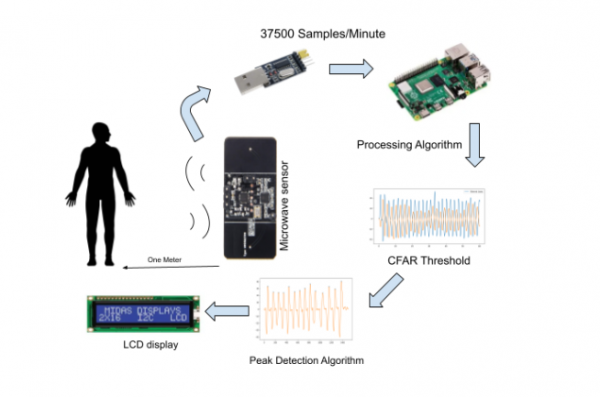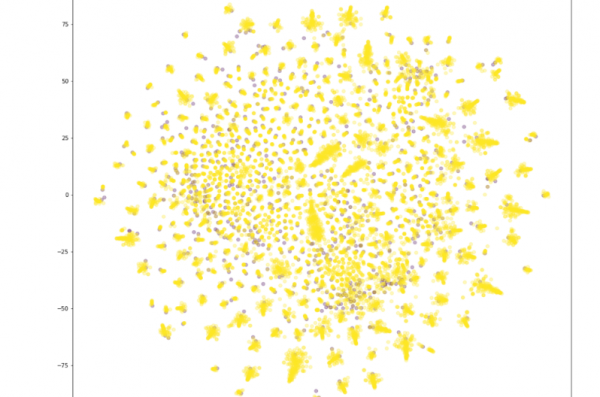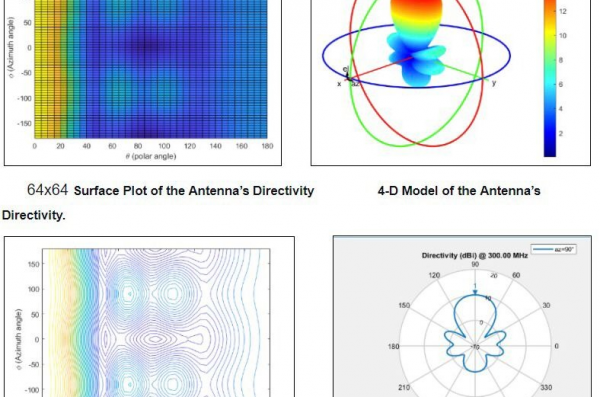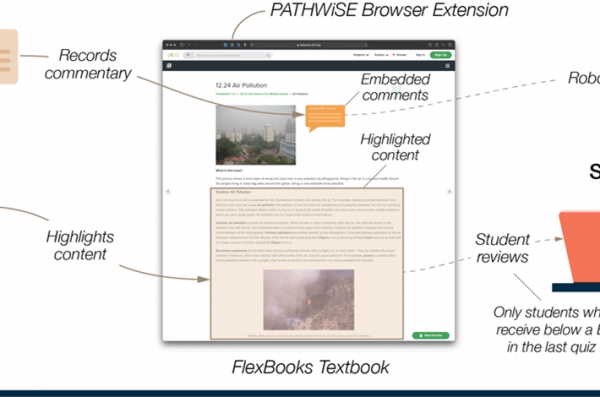2020-2021
ERSP Projects Heading link
In 2020-2021, we had a cohort of 30 scholars from the Computer Science and Electrical Engineering departments: 18 Computer Science students and 12 Electrical and Computer Engineering students. The ERSP scholars worked on a research project in teams of 3-4 students along with a faculty member and/or graduate student in the College of Engineering. Below you can find more information about their projects.
Non-Contact Respiration Monitoring

Scholars: Mohammad Merei, Lavithra Mysore, Afifa Nadeem, Victor Ceja-Ruiz
Mentors: Dr. Ahmet Enis Cetin, Ouday Hannosh (ECE)
Respiratory rate is one of the vital signs that measures many critical functions of the human body. In this work, we present a contact-free respiration monitoring system using a low-cost microwave motion sensor that can measure respiratory rate by detecting the chest motion due to inhaling and exhaling. To prove the concept, we have collected 260recordings from objects simulating inhaling and exhaling of the chest placed at a distance of 1 to 2 meters in front of the sensor. The sensor is expected to provide a signal with peaks representing the simulated motions, this signal is then analyzed using a python algorithm to detect the peaks. To evaluate the reliability of our system, the simulated motions are manually counted while collecting data. A high positive correlation coefficient of 90.9%is obtained with a root mean squared of 1.86. The paper investigates the concept of using low-cost microwave motion sensor in detecting respiratory rate, and further developments could provide more interesting respiration system designs using microwave motion sensors.
Representation Learning on Heterogeneous Graphs

Scholars: Bhavana Radharapu, Mariya Pasheva, Nimeesha Zhe Wey Chan
Mentors: Dr. Xinhua Zhang (CS)
According to a January 2021 social media statistics report, about 4.20 billion people currently use social media. As we become more dependent on online services to manage our finances, communication, entertainment, and many more, in an increasingly active data being available companies are always coming up with effective ways to analyze their data and create products that will satisfy their target consumers needs. In this work, we have explored two algorithms that generate low-dimensional node embeddings in heterogeneous graphs, HinSAGE and metapath2vec. We worked to build a recommendation system for Yelp and we were able to achieve the following results (1) successfully getting nodes to learn from their neighbors, and (2) representing nodes within the context of the graph structure and its connections. Furthermore, in terms of improving the models we built, we would like to incorporate more features into the nodes, explore the friendship connection between users, and test whether our models can generalize to larger, sparser datasets.
Wearable Technology and Mindfulness

Scholars: Priyanka Patel, Jessamyn Lopez, Omotola Elujulo, Manya Singh
Mentors: Dr. Hananeh Esmailbeigi (BioE)
Bruxism is a condition in which individuals apply excessive force to their teeth, and it is often exhibited by the habitual act of teeth grinding and clenching. Often, bruxism is initiated as a result of stress or irregular sleep patterns, and occurs unconsciously, without the individual’s knowledge of the habits . According to the Academy of General Dentistry [1], 1 in 3 people in the United States suffer from bruxism. This condition often leads to secondary side effects such as facial pain, migraines, gum recession, and dental complications [2]. Due to the unconscious nature of the bruxism, it is difficult for the patient to consciously stop this habitual act. Hence, an alerting system that would bring consciousness to this habitual act could allow for controlling excessive clenching during the day time. In order to address this issue we collaborated with engineers who have developed BruxAlert. BruxAlert is an intraoral wearable that provides haptic feedback in cases of grinding and clenching of the teeth, and also tracks vitals such as temperature and blood oxygenation levels. Our team has developed the accompanying smartphone application that dares to monitor signs of bruxism and vitals, and keeps a record of the patient’s history and improvement over time.
Radiation Plot Evaluation of Yagi Uda Antenna

ERSP Scholars: Adriana Olvera Cabral, Ryan Chismark, Shakiba Vahid Moghtada, Tom Nguyen
Mentors: Dr. Pai-Yen Chen (ECE)
Edit Distance Problems

Scholars: Maddy Wikstrom, Anastasiia Evdokimova, Zara Farin
Mentors: Dr. Xiaorui Sun (CS)
The goal of our project is to solve the edit distance problem. Edit distance can be defined as the quantification of the similarity of two strings by determining the minimum number of edit operations required to transform one string to another. The edit operations include insertion, deletion, and substitution within the string. Our motivation for solving edit distance problems is we want to understand if recent developments on theoretical approximate parallel algorithms are practically faster than existing parallel implementations. Our proposed solution was to develop the fastest implementation of a multi-core parallel edit distance algorithm using CUDA (a parallel computing platform created by NVIDIA) and C++. We based our solution on the massively parallel computation (MPC) model, a GPU memory model, and recent developments of parallel edit distance algorithms. Our implementation was approximately 5 times faster than CUDAlign, which at the time was the current fastest GPU implementation of edit distance.
PATHWiSE – Science Education

Scholars: Grace Pnacek, Halli Lacanlale, Fernando Mantilla
Mentors: Dr. Michaelis (CS)
This project goes through the process of designing a UI for a customizable teacher tool to assign homework to students in way that empowers the teacher to provide any additional supports that mirror supports they would be able to give in a classroom. Firstly, we reviewed literature on teacher needs, classroom dynamics, and how teachers support their students both in and out of the classroom and then designed preliminary UI wireframes and sketches based on those theories. To understand the perspectives of the users, we interviewed middle school science teachers and semantically coded the transcripts to acknowledge any overarching themes. We distilled three major themes from those interviews and related design implications that can be valuable for educational software development for teachers to provide guidance in homework. Finally, we illustrated the corresponding early prototype of a teacher tool developed from these design principles.
Combating Defragmentation

Scholars: Mohamed Hassan, Gurleen Kaur, and Samhita Chandu
Mentors: Dr. Xingbo Wu (CS)
Our group investigated the effects of defragmentation on storage devices such as SSDs. The sole purpose of the study is to explore the costs and risks associated with copying data in the process of defragmentation and how we can minimise negative effects of defragmentation on SSDs.The basic design of our study is to work on building the algorithm and running it on real hardware devices to capture the results. For this research we constructed our own algorithm and named it the “best fit algorithm” which we used to find the solutions to the problems posed.We propose the algorithm we structured which was able to successfully minimise the memory wastage to an extent.
Predicting Future Memory Access

Scholars: Alianna Bulanhagui, Dillon Aguilar, Himangi Gupta, and Samprithi Vilvasigamani
Mentors: Dr. Zhichun Zhu (ECE)
A key reason for our project is the “Memory Wall” or “Performance Gap” problem, which is the divergent trend between a microprocessor and memory due to the performance of memory not increasing as drastically as its microprocessor counterparts. The gap in performance between microprocessors and DRAM (Dynamic Random Access Memory) is said to double every 2.1 years [1]. As a result, computers experience excessive memory call wait time and hit a memory wall. There is also a memory bottleneck problem which is a shortage of memory when the computer system doesn’t have sufficient or fast enough RAM. It can also occur when there are memory leaks (when a program allocates memory incorrectly). These both slow down the data transportation between the CPU and RAM. One way to alleviate the bottleneck is through prefetching which is a method of populating cache with predetermined data. Instructions are fetched from memory ahead of their execution time. The challenge that arises with prefetching is that it can cause more harm than benefit if the limited cache estate gets congested with unnecessary data, thus creating an even longer runtime waiting for the cache to clear up.
In this implementation, our scheme intends to refine machine learning prefetching, so the system would be able to learn which pieces of essential memory would be necessary to complete a task and eliminate any unnecessary data that would otherwise congest the cache.